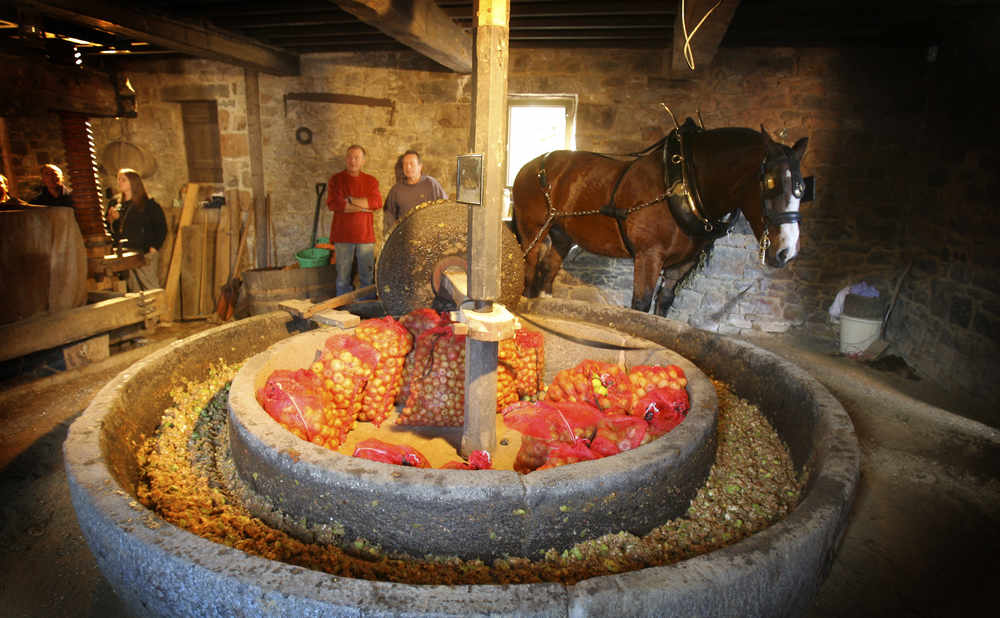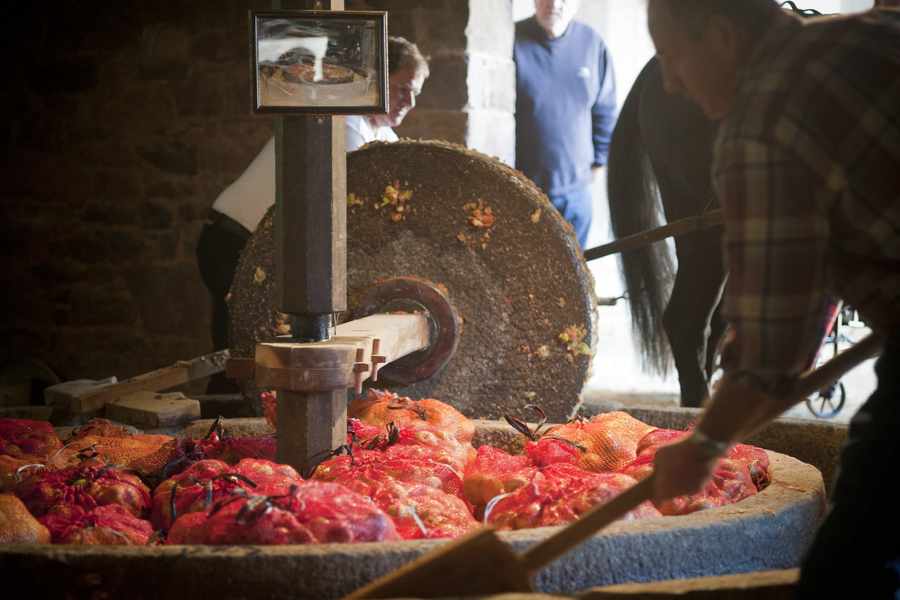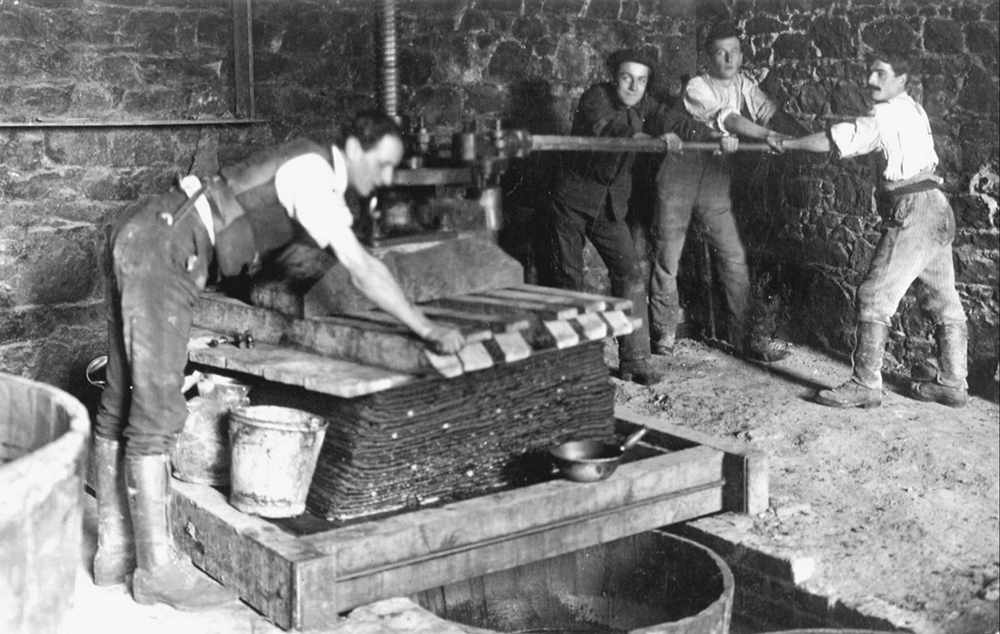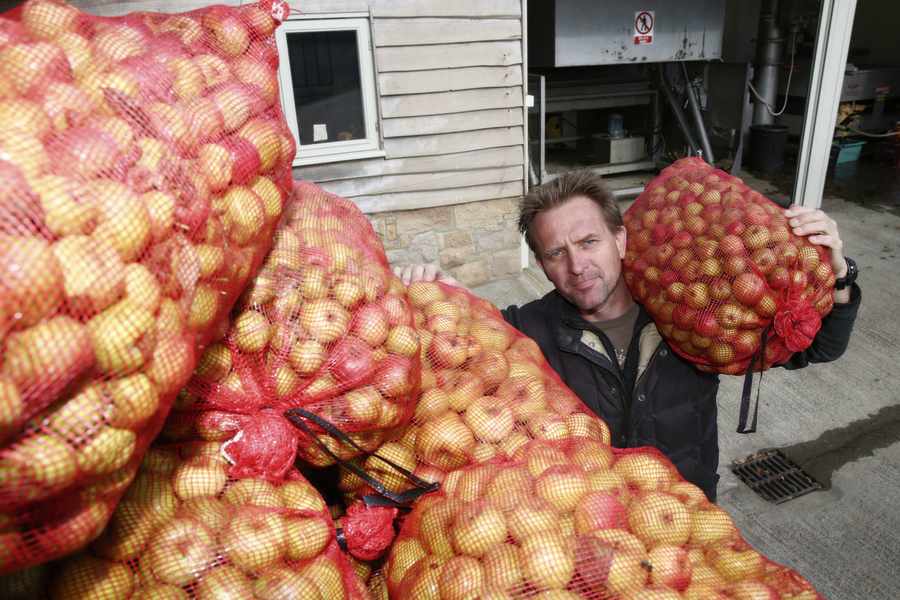Over the past two decades, both Islands have successfully revived the old tradition of producing cider, which was once the bailiwicks’ biggest export to the UK and a mainstay of rural life when the drink was an essential part of islanders’ daily diets.

- Rocquette Cider Company was set up 1998 to re-establish Guernseys traditional cider-making industry, and the family-owned business today produces around 130,000 litres of cider annually
- Seven heritage Jersey cider apple varieties made up the one-ton consignment from Jersey: bisquet, binet rouge, douce de coët ligné, bedan, clos reneaux, rambault and noël des champs
- In the 1790s about 16 per cent of Jerseys total land area was orchards, mostly of apples. The number of orchards varied from parish to parish, with fewer in the west than in the east
- From 1852 to 1855 cider exports averaged 150,000 gallons about one tenth of annual production as Islanders drank the rest
The hand of friendship has been extended from Jersey to Guernsey in a consignment of Jersey heritage apple varieties from Steven and Linda Carter’s farm in St Lawrence, which was shipped last week to the Rocquette Cider Company in the Fauxquets Valley in Castel.
Yesterday, the Mellers, the family who own Rocquette Cider, added the Jersey apples to those grown in their own orchards and others around Guernsey to make this year’s vintage.
James Meller said that with a bumper crop this year, they were looking forward to an excellent vintage.
‘We hope it is going to be well received, as introducing Jersey apples to the blend is a very exciting initiative for us and, of course, we look forward to some friendly inter-island banter over a pint of cider,’ he said.
The idea for the Channel Islands cider blend was a joint initiative from Jersey restaurateur Steve Besant and drinks wholesaler Martin Barette, who last year approached Rocquette Cider.
Mr Besant said he was confident that even dyed-in-the-wool patriotic Islanders would put their rivalries aside in the interest of producing a top-quality regional product.
‘I was keen to produce a Channel Islands cider to complement those made in Jersey and Guernsey, and to do that we had to have a blend of Jersey apples that would work well with those used by the Rocquette Cider Company,’ he said.
‘Steve and Linda’s orchards have produced really good fruit this year.
‘We hope this will be the start of a very long and fruitful inter-island relationship.’
Rocquette Cider will be available in bottles and kegs early next year.


A brief history of cider making in Jersey:

Apples have a reputation for being good for our health and over the centuries have been associated with love, but they are not nearly as popular in the Island now as they used to be in the 19th century.
In the 1830s nearly 300,000 gallons of Jersey cider were exported annually to the UK and two-thirds of the Island was covered in apple orchards.
[breakout title=”The remaining Jersey apple varieties are:” align=”right”]
[figure title=”AIG_0520″ align=”none” id=”1574339″]
Rouoget: A fairly crisp, tender white flesh with a sweet, subacid flavour.
Gros France: Large, sweet green apple, good for all purposes.
Nier Binet: Very good all-purpose apple.
Tetard: Cider only. Bitter-sweet, green.
P’tit France: Medium-sized sweet apple, hard and very green.
Gros Romeril: Sweet, soft green apple.
Douces Dames: Very sweet and early.
Belles Filles: Sweet and green.
Caplyi: Streaked with red.
Vert Caplyi: Small fruit, bitter sweet, grey-green.
Gris Caplyi: Sweet, small fruit, greyish-red.
Cotard: Green and sour.
[figure title=”DSC_7819″ align=”none” id=”1574335″]
[/breakout]
Today the granite apple crushers are mostly giant flower pots, but at one stage so many trees grew in Jersey that in 1673 the States had to pass an act to stop orchards being planted unless as a replacement for an old one.
The expansion of cider apple orchards on the Island took place in the 100 years between the late 16th and 17th centuries, and it changed the face of the Island. For generations, cider had been Islanders’ habitual drink and had gone no further than that, but its potential as a profit-making venture was soon realised and fields full of dry cereal were replaced by the blossom of sweet and sour cooking apples. Apples replaced corn as the Island’s main crop.
Until then, there had been very few trees of any sort in Jersey and cereal grew in large unenclosed fields. But apple trees needed protection, so banks were built around the orchards and hedges were planted on top of them. Lanes reached into the small fields and orchards wound around the edges overhung by banks on either side. In fact, the country lanes were reformed and started to look much the same as they do now.
But from the mid 19th-century onwards, potatoes and tomatoes gradually superseded the cider apple as the main Island crop and the decline of Jersey’s once-thriving cider industry continued throughout the 20th century.
Many off the ancient varieties of Jersey cider apples were lost, and today anyone who produces over 1,000 litres of the drink a year needs special Customs and Excise clearance.
The decline of the industry was a cause for concern in the 1980s and a group of people with knowledge of rootstocks, grafting, cider apple varieties, cider marking and tree identification agreed on a policy to track down any remaining apple trees, identify the remaining Jersey apple varieties and establish a nursery of identified and unknown varieties.
The nursery was established in January 1989 and an orchard was planted in 1991 at Howard Davis Farm. It consisted of 132 trees and has now been joined by more orchards, including one at the Hamptonne Country Life Museum in St Lawrence, where 1,000 litres of cider are made in the traditional way every year.
As the Island’s love of cider enjoys a gradual resurgence, more orchards have sprung up around the parishes. There is also an annual cider-making festival -fais’sie d’cidre – which is held in the cider barn at Hamptonne and encourages Islanders to learn about this particular era in their heritage.
[figure caption=”Everyone gets stuck in to help with cider making on Frank Pirel’s farm, Les Ruettes, on the borders of St John and St Lawrence, in December 1958″ title=”TEMPS PASSE CIDER MAKING 1958″ align=”none” id=”1574341″ size=”100″]
[figure caption=”Picture: Société Jersiaise” title=”701879″ align=”none” id=”1574345″ size=”100″]
[figure caption=”Picture: Société Jersiaise” title=”701878″ align=”none” id=”1574343″ size=”100″]
[breakout title=”The importance of the cider apple in Island life during the 18th century can be seen in a letter home in 1781 by visiting chaplain James Playfair. He created a picture of Island life that revolved entirely around the cider apple:”]
More than one fourth of the inclosures of the Island are planted with apple trees under which the cows feed. The apple trees furnish them [Islanders] with cider, which is all they drink, and the branches of the barren wood serve for their fuel.
There is nothing of what may be called agriculture carried on here. Every man lives in his few acres, which are generally his own. He labours them with his own hands and keeps a horse and two cows. And his wife manages the matters of the house.
Everybody has but little, but everybody is above want. They sometimes feed cattle, but their chief animal food is pork. To feed cattle and swine they make use of parsnips. Having trenched the ground with a spade, they sow it with parsnips and beans mixed.
When the beans are ripe, they pull them, and apply them to the feeding of the swine; and after the beans are pulled they feed their cattle by putting them into the field to eat the straws of the parsnips, and after the straws are done they take out the shoots and give them to the swine.
They likewise feed their swine on rotten apples; they sometimes give them sour milk and sometimes oats. Every man has a pig sty.’
[/breakout]
[youtube]<iframe width=”420″ height=”315″ src=”https://www.youtube.com/embed/w0wCDSJDu2Y” frameborder=”0″ allowfullscreen></iframe>[/youtube]






